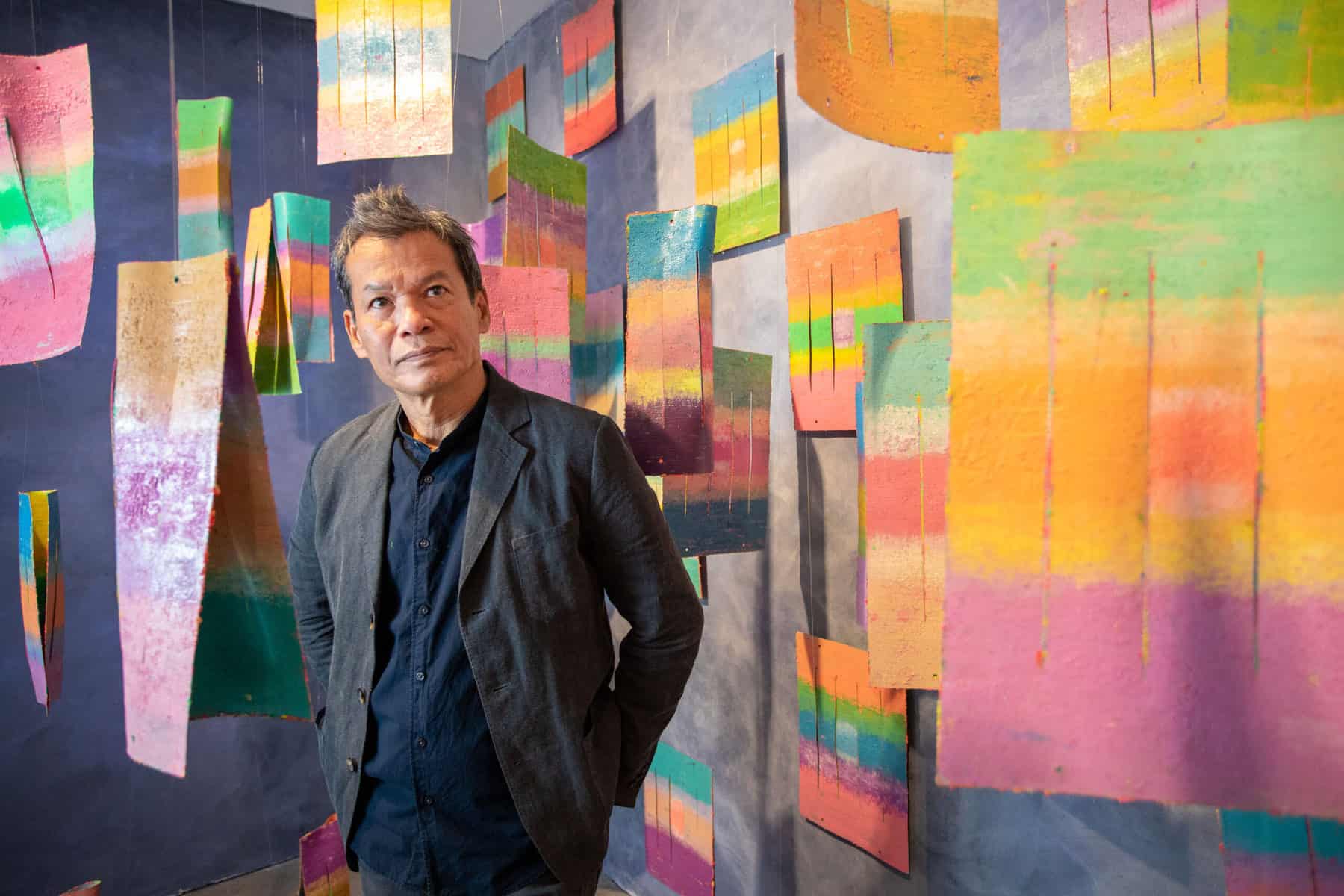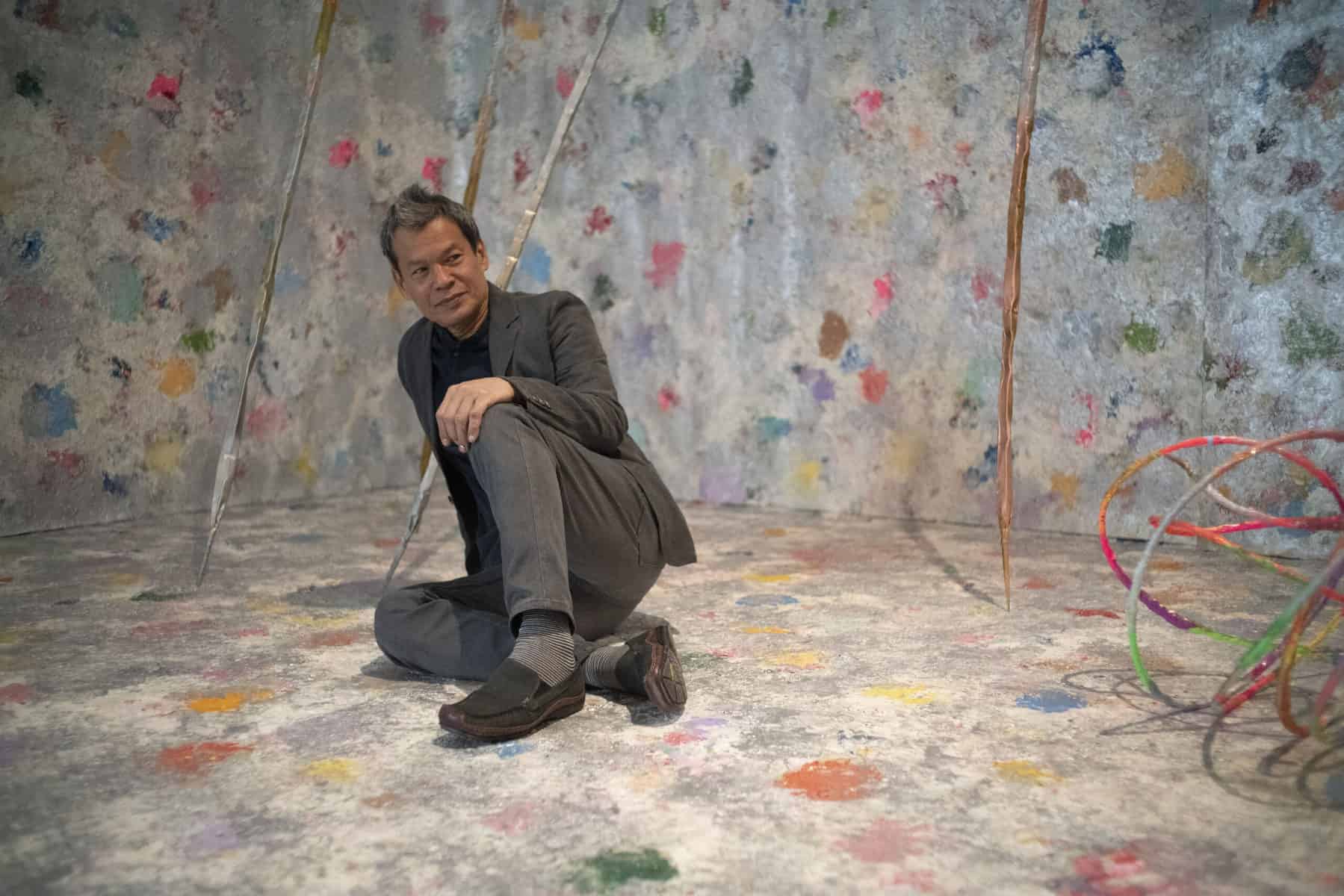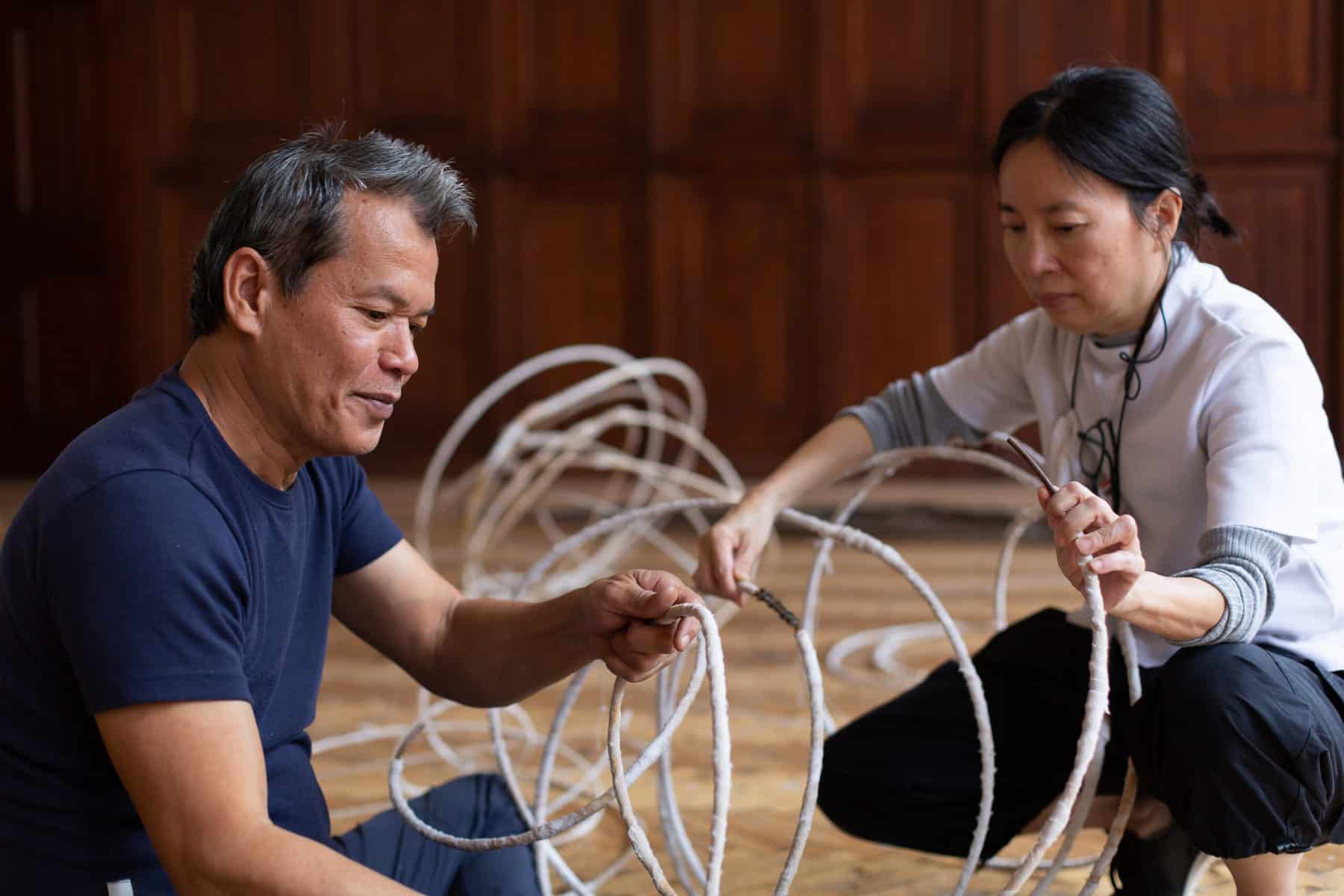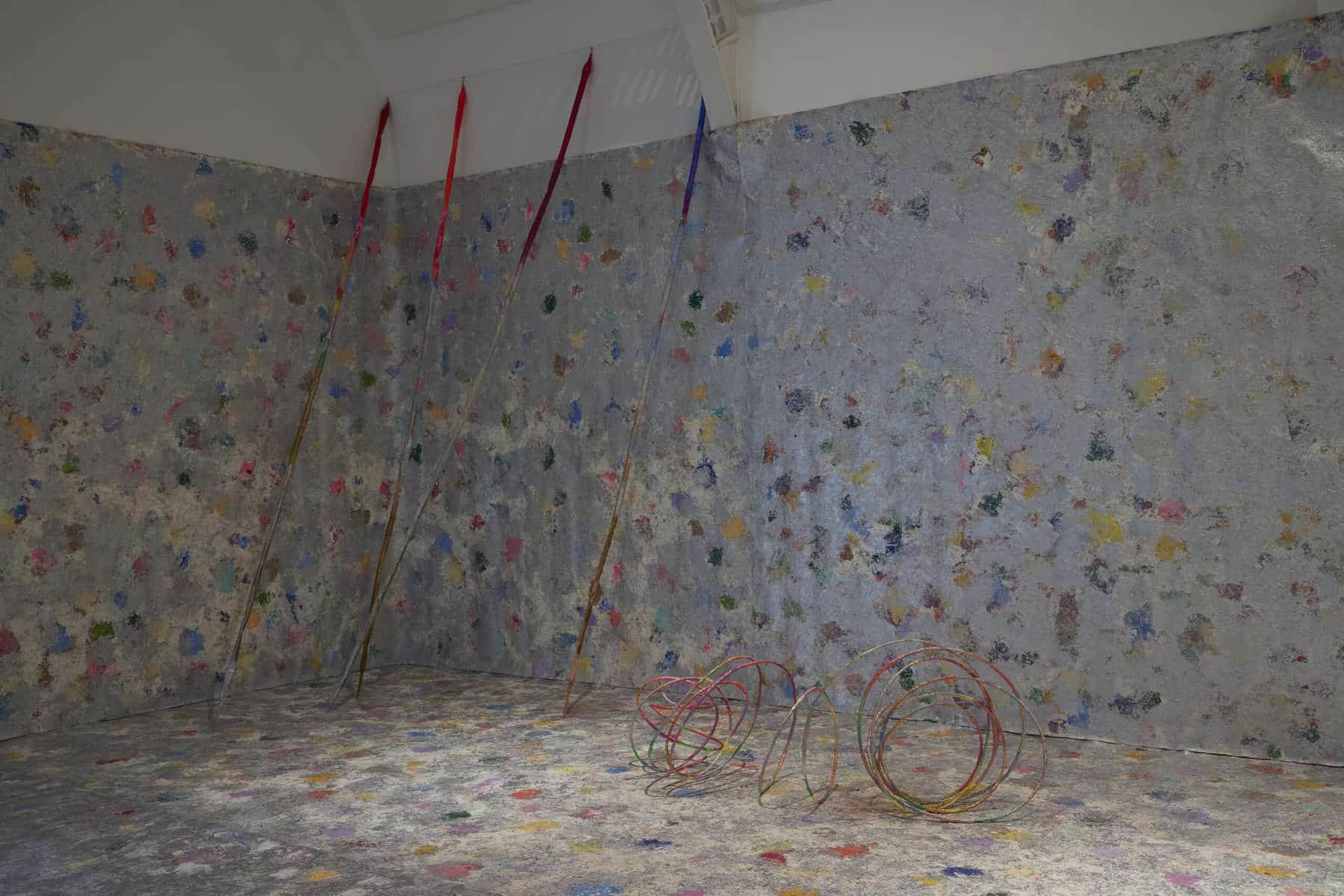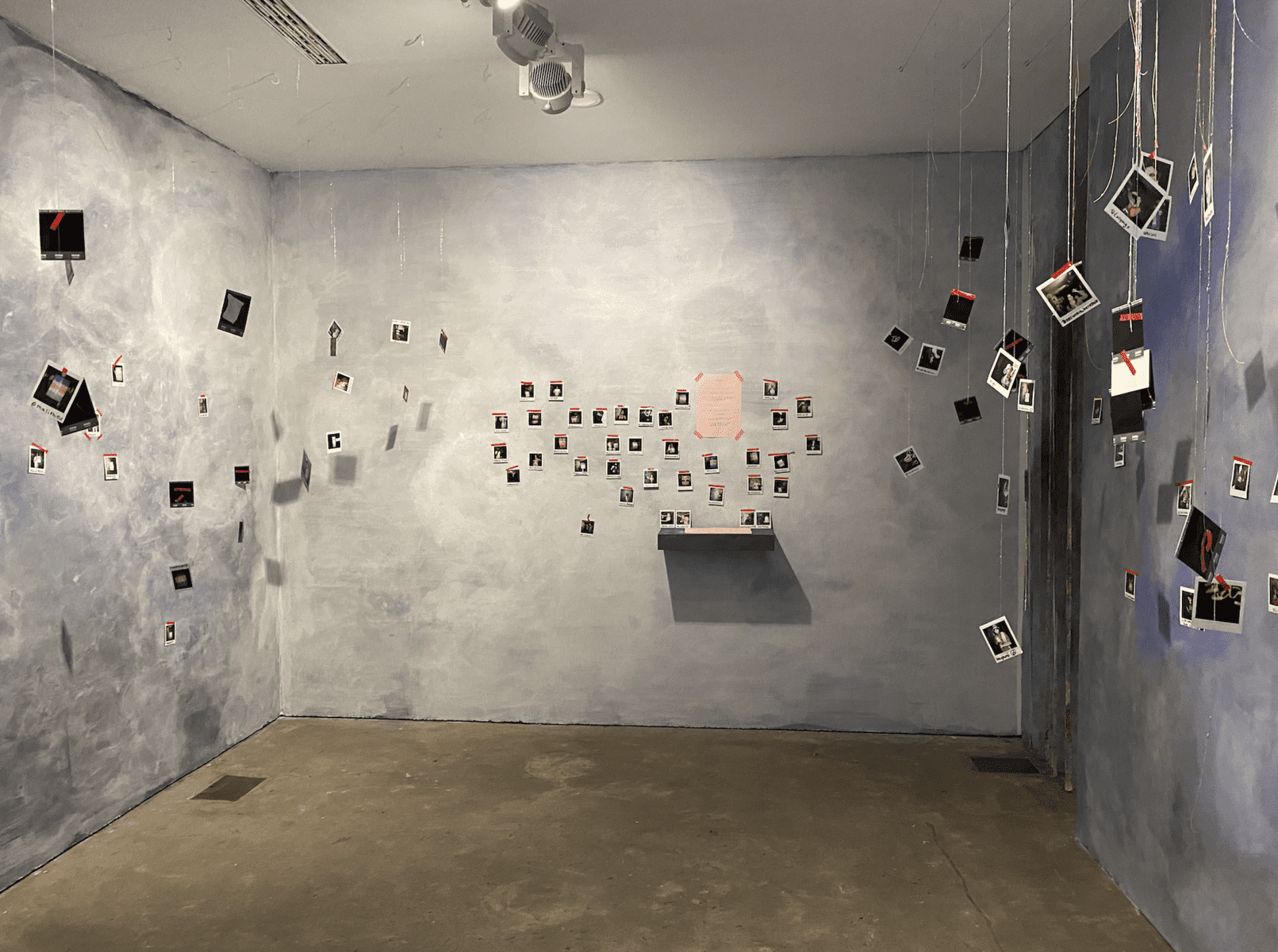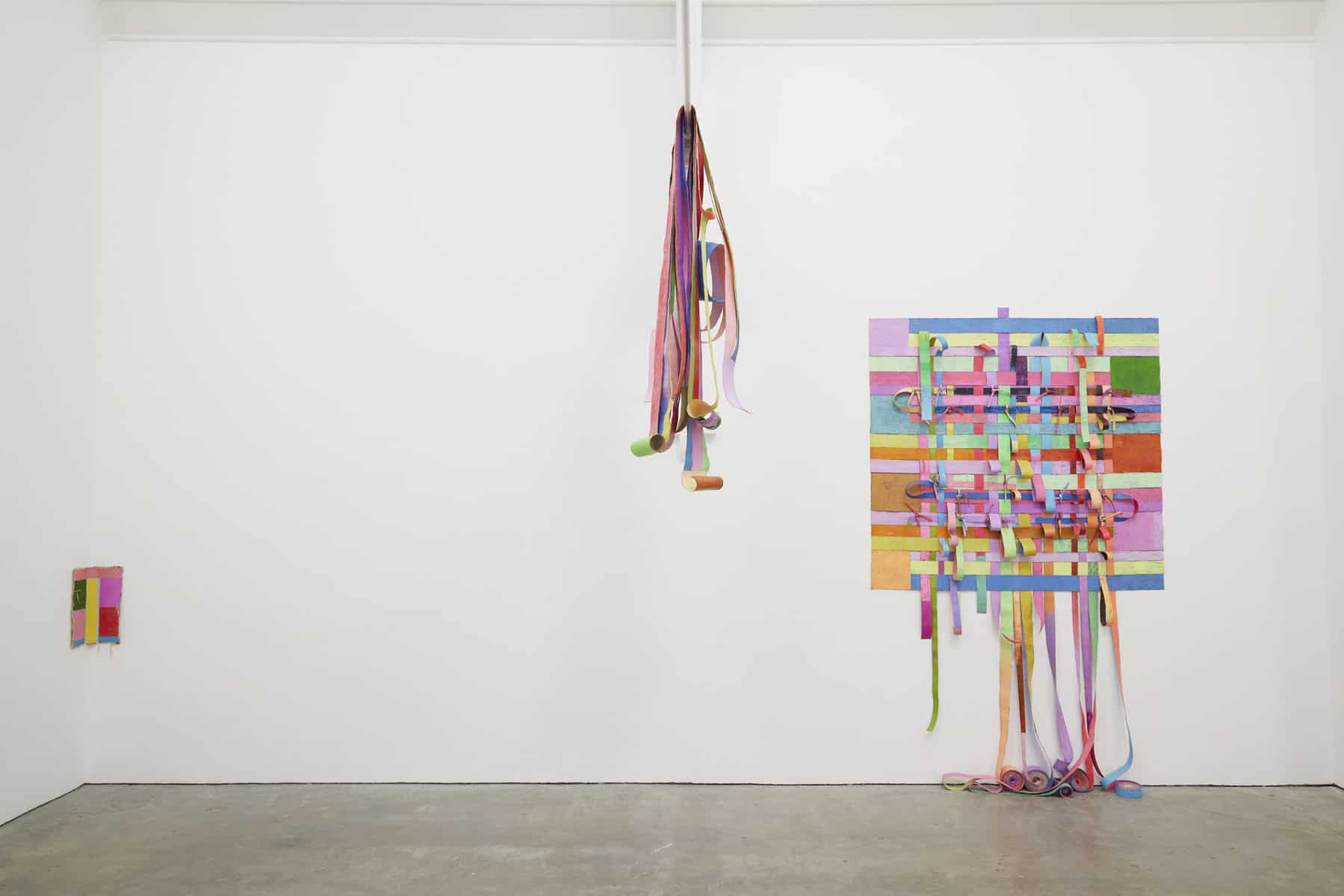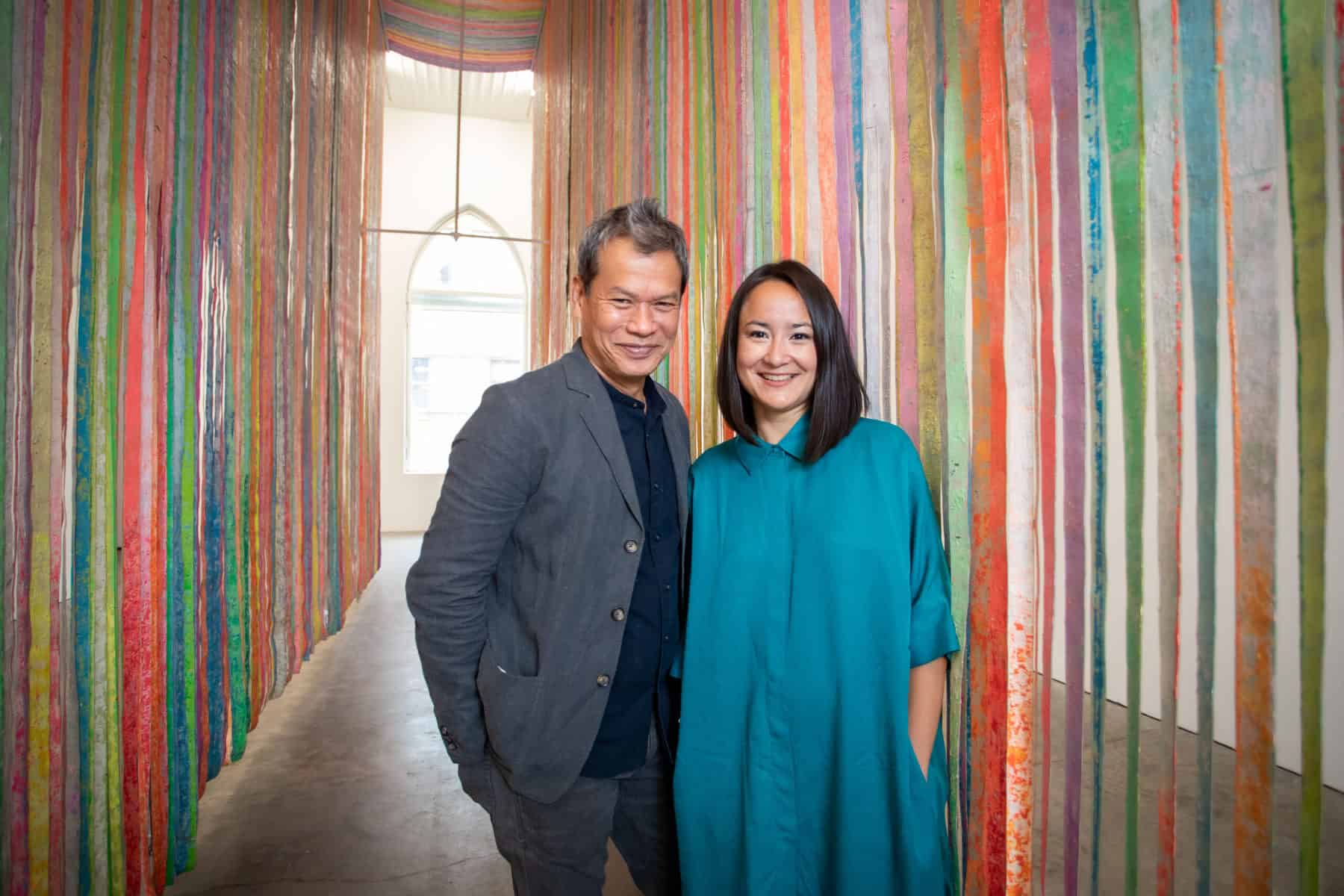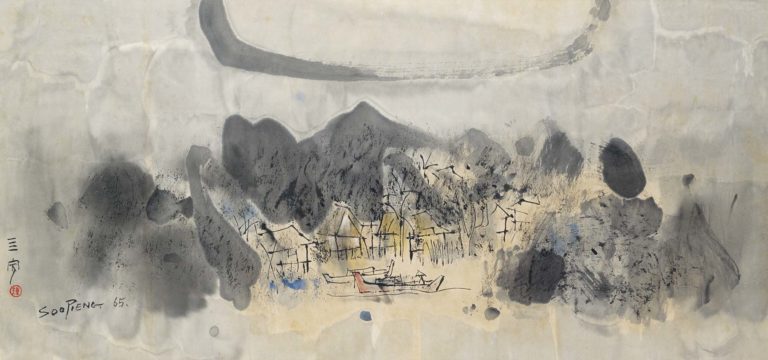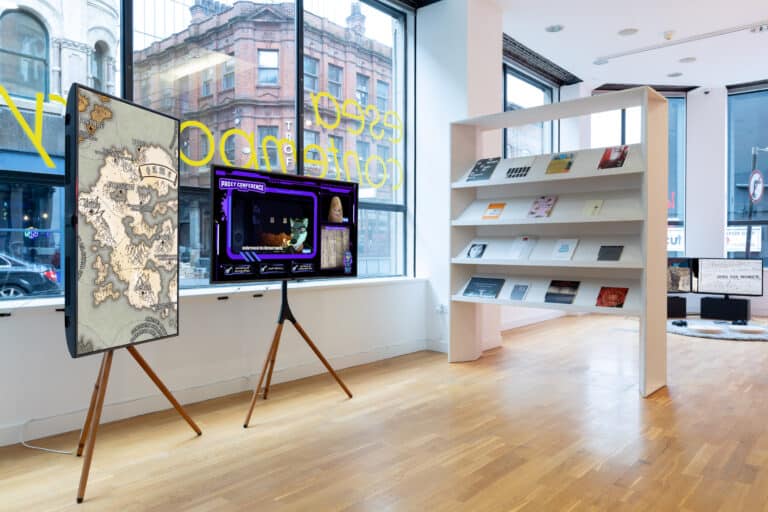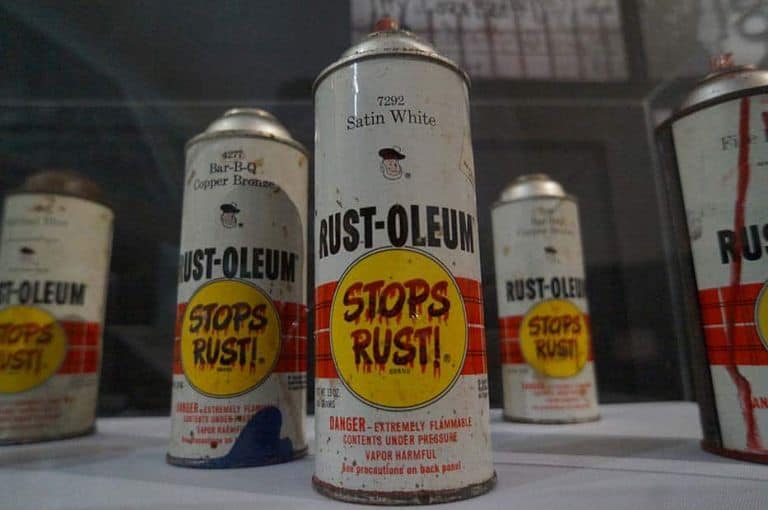While London might be considered the prime destination for contemporary art in the U.K., I found myself travelling to Birmingham searching for something that even the British capital rarely offers: a solo show dedicated to a living, breathing Southeast Asian artist.
The artist in question was Thai practitioner Mit Jai Inn, who is most known for his brightly coloured artworks that meld painting and sculpture. Having worked for over thirty years, painting remains a physical and deeply meditative process for Mit as he uses his hands, fingers and palette knives to dab and pull colours onto canvas surfaces. His political activism, republican leanings and hope for a new, utopian way of life inform his practice as his works express resistance against the Thai monarchy and military rule.
European Beginnings
Hailing from Chiang Mai, Mit studied painting at Bangkok’s Silpakorn University. It wasn’t long until he travelled to Germany in his final year and decided to pursue a Masters degree in the University of Applied Art in Vienna. It was there that Mit developed his sculptural practice and worked as Franz West’s studio assistant, which informed his belief that art could be a free form of distribution to oppose society’s capitalist structures.
Presenting his first-ever solo show in Europe is Birmingham’s historic Ikon Gallery, which was established in 1964 as an accessible space to promote the exchange of visual ideas. “I see Mit’s time in Birmingham as his return to Europe after leaving Vienna,” Ikon Gallery Curator Melanie Pocock tells me over a phone call, “and I was hoping he would use this time to return to sculpture.”
Fortunately, Mit was able to travel to Birmingham in August 2021 to prepare for and install the exhibition, entitled Dreamworld. Believing it was important for Mit to have the opportunity to produce work during his time in the U.K., the gallery organised a six-week-long residency for him at the Birmingham School of Art. There, Mit produced welded forms of sculpture, some of which ended up being exhibited in Dreamworld.
Dreamworld centred on Mit’s vision of art being “a utopian dream within everyday life” and “collective hopes for a better future.”
A result of Mit’s residency, Midlands Dwelling is an expansive and immersive work that greeted visitors first upon entering the show. Canvas covered the floor and gallery walls. On top were thick coats of paint that recalled Mitt’s Chiang Mai studio and how the humidity would render paint viscous and sticky.
I loved how immersive and tactile it was, as I was able to walk on the painted floors and gently run my hands over the textured walls. I found myself wanting to get closer and closer to the work — a prospect that seemed a little frightening after socially distancing for years and experiencing art through screens.
Tall, welded sculptures partially covered in paint and canvas (the fruits of Mit’s labour from his residency) occupied the space, ambiguous and totemic. What struck me was how dimly lit the room was — a jarring difference from typical ‘white cube’ gallery arrangements — in hopes of evoking a prehistoric cave, where ancient humans would reproduce their dreams as drawings.
A Different Kind of Art Market?
Another work that continued to live in my head rent-free for days after leaving Birmingham was #dreammantra. I was initially puzzled by the room which was full of polaroids hanging from the ceiling. Upon closer inspection, I learned that they depicted members of the public who had partaken in the work.
What is it exactly, you may ask?
“Mit produced around 230 miniature objects, half of them were sculptural objects, the other half double-sized paintings. If people were curious and felt prompted to ask an invigilator about them, the invigilators would honour the visitor’s curiosity and invite them to partake in the ritual of #dreammantra,” said Pocock.
Visitors would be invited to select an object and take it home, but not without pledging to take care of it. In return, they would also take a polaroid photograph of themselves, pen their names and social media handles, and hang it in the space of the item that was taken. Pocock explained that “this creates a communal exchange, rather than a free-for-all. It also makes visitors consider what it means to receive and give for free.”
I found this exchange inspiring as the care involved in the exchange seemed to prevent the object from becoming solely a commodity. Instead of potentially being flipped on the secondary market, it was now an item that a member of the public cherished.
Equally endearing is the idea that somewhere out there in Birmingham, a member of the public has one of Mit’s small artworks in their home, mindfully enjoying it beyond the confines of a gallery. It is a refreshing sentiment considering how the art market is often defined by eye-watering auction prices and how many institutions remain removed from the lives of the general public.
Personally, I’m fond of #dreammantra. Though it took around 4 weeks for all the objects to be adopted and I wasn’t able to get my hands on any, I loved that the work reflected Mit’s views of his artworks as gifts and his generosity towards sharing them with others — a vision that he might have adopted while training as a novice monk in Thailand during his mid-teenage years.
Created at the end of the previous century, the Dream Works series expresses fear and trepidation for the new millennium. While previous Patch Work pieces were composed of loose, interlocking grids of colour, Patch Work 2 develops this aesthetic further by adopting a tight, large-scale quilt format.
Speaking Truth to Power
These seem like a departure from some of Mit’s previous works. Prior to the Dream World, Mit frequently referenced the Thai flag in an abstract manner by using colours such as red, blue, yellow, and silver, in his works. His previous exhibition The King and I featured him working with abstraction; something that became a necessary measure to avoid Lèse-majesté (the law under which insults or criticism of the Thai monarchy are considered crimes punishable by imprisonment).
While Dream World doesn’t directly touch on this, it’s worth understanding that Thailand’s political climate weighs heavily on Mit’s mind. With Lèse-majesté being such an expansive law, one might think that Mit works in fear. However, Mit is unwavering in expressing his beliefs despite this. In a previous interview with Pocock, Mit shares that while his friends and family worry for him speaking out against royal Thai rule, he asserts that “there’s so much abuse of power and justice.”
“Trying to confront these things matters more to me than my own life.”
Learning about Mit’s outlook and his stand against a political system that is so much bigger than him left me thinking: it’s not that he isn’t scared or bogged down by opposing structures, it’s that he creates art in spite of this.
This is something to be celebrated in an age where resisting society’s power structures, such as capitalism or political climates, can prove overwhelming.
Birmingham Calling ?
All the while, I couldn’t help but wonder – why bring Mit to Birmingham and why now?
“People who aren’t from Birmingham usually aren’t aware that it’s an international city with diverse cultures and ethnicities,” Pocock tells me enthusiastically.
“At Ikon, I’ve been thinking of international programming and making the argument for Birmingham as an international city, especially in light of its migrant history,” she continues.
Pocock first met Mit in 2017 while working at the Institute of Contemporary Art at LASALLE College of the Arts in Singapore.
“It took time for me to apprehend his concepts and developments from the past five years. 2021 felt like a good time for Mit and his work, especially since he has been working for a long time,” Pocock explains.
As for how bringing Mit to Birmingham fits within the gallery’s curatorial agenda, she points out, “in Asia, Mit has mostly been shown in bigger biennales and commercial shows.”
“In contrast, Ikon could offer a solo project to catalogue his work to date. Education is also one of Ikon’s primary endeavours and we hope the exhibition provides opportunities to research artists like Mit whose works haven’t been written about a lot.”
Navigating the Dream Tunnel
Rounding out the exhibition was Dream Tunnel, which strove to inspire a sense of hopefulness despite the chaos that many have experienced in the past year. Consisting of two massive hanging double-sized canvases that have been slit into panels of ribbon, Dream Tunnel created a room within a room that invited viewers to walk inside and get lost in the dizzying array of colours.
Covered in metallic silver paint, the structure harkens back to Mit’s indigenous identity; alluding to how the Northern Thai Tai Khun would traditionally work as silversmiths in the royal court. I relished running my hands through the ribbons, letting the tactile, immersive experience sink in, encouraging me to consider the blurred boundaries between painting and sculpture.
Another thing I enjoyed was that standing in the tunnel for a few moments encouraged me to just be – something that’s particularly rare when we’re constantly heading from museum to gallery to art fair. Seeing the happy masked faces around me in the exhibition was also hard to ignore, with visitors ooh-ing and ahh-ing over the brilliant colours and their freshly taken selfies.
Many of us have been imagining simpler and more hopeful existences since the pandemic and it’s no doubt that many of us have turned to art for it. I walked out of Dreamworld with a fire in me, silently thanking Mit for what he had given me – a renewed conviction to question the systems dictating the way I live and forge my own path despite them.
While I can’t single-handedly take down governments or abolish the systems controlling our society, I can, as a writer and art historian, give space to and shed light on fellow artists, activists, and scholars that do.
Ultimately, I have Mit to appreciate for helping me to realise that.
____________________________________________
Dreamworld tours to MAIIAM Contemporary Art Museum, Chiang Mai (8 September 2022 – 28 April 2023).
In Singapore, visit Mit’s show Paphonsak La-or’s Prospects at 39+ Art Space from now till 12 March 2022
